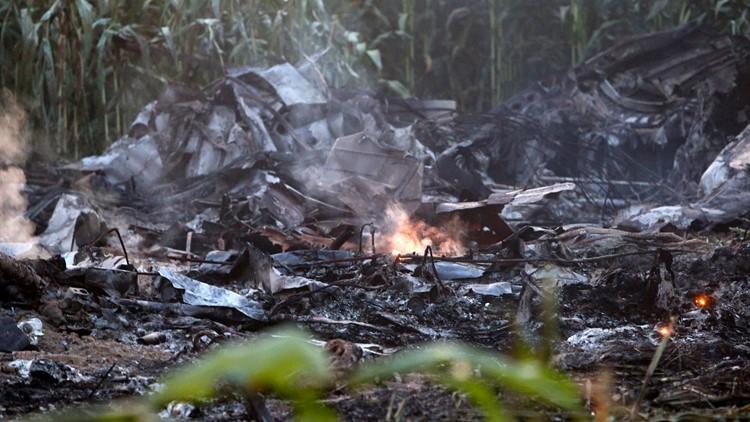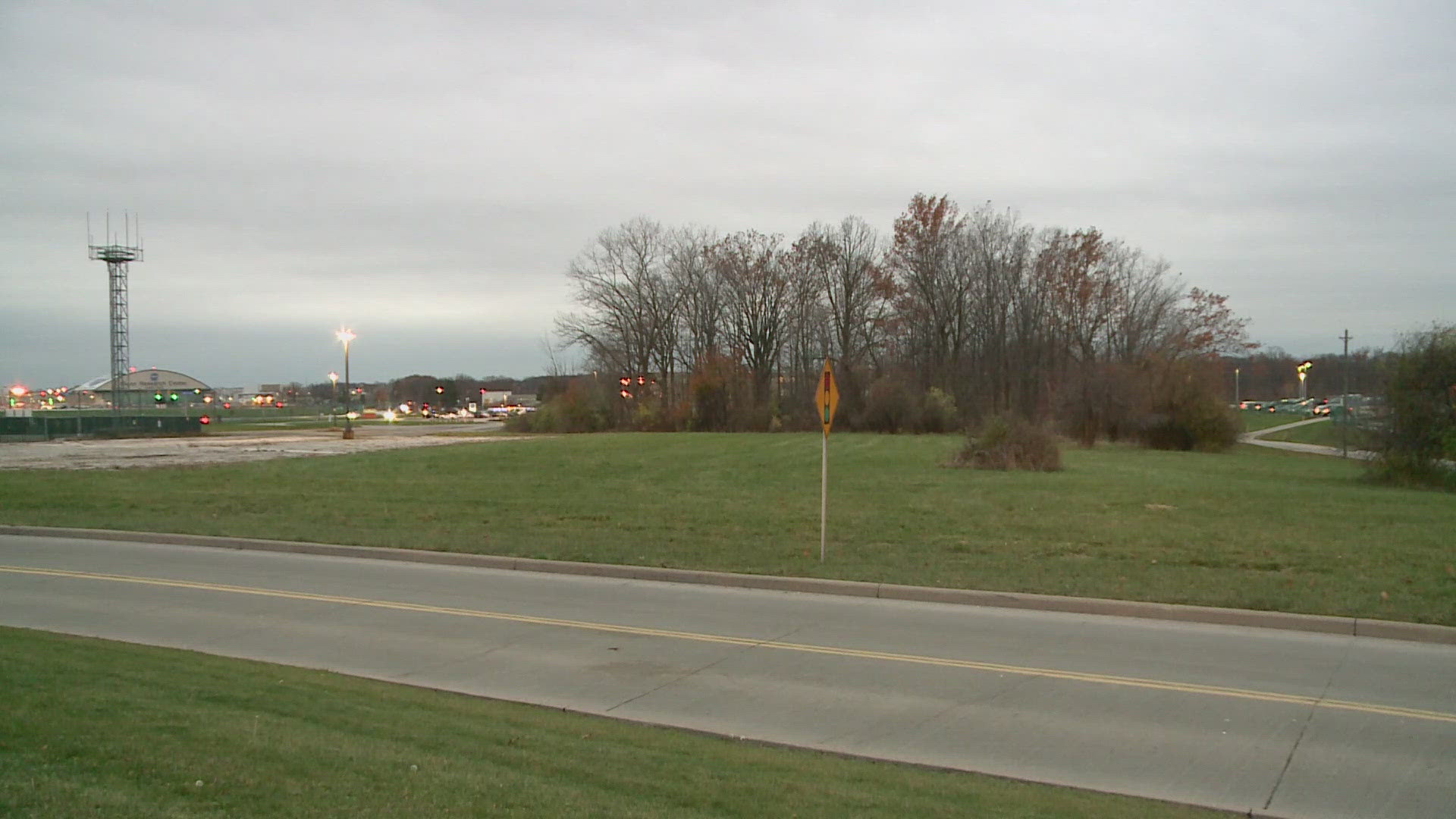PALAIOCHORA, Greece — Experts investigating the site of a cargo plane crash in northern Greece said Sunday they have found no evidence of dangerous substances but say there is still a lot of widespread ordnance, while Serbia's defense minister confirmed that all eight crew members had died in the crash.
The An-12 cargo plane from Serbia flown by a Ukrainian aviation crew smashed into fields between two Greek villages late Saturday. Its fuselage dragged on the ground for 170 meters (nearly 190 yards) before it disintegrated. Locals reported seeing a fireball and hearing explosions for two hours after the crash.
Serbian Defense Minister Nebojsa Stefanovic told a news conference Sunday about the crew deaths. He also said the plane was carrying 11.5 tons of Serbian-made mortar ammunition to Bangladesh, which was the buyer. It had taken off from the Serbian city of Nis and had been due to make a stopover in Amman, Jordan.
“These were illuminating mortar mines and training (mines). ... This flight had all necessary permissions in accordance with international regulations,” Stefanovic said.
The plane was operated by Ukrainian cargo carrier Meridian. The Ukrainian consul in Thessaloniki, who arrived at the crash site, told local officials that the crew were all Ukrainian.
The Greek Army’s Special Joint Nuclear, Biological and Chemical Defense Unit cleared two paths Sunday for Fire Service forensics experts to move in before leaving. The new team was on the site Sunday afternoon collecting body parts. They have retrieved one body and have found another, a Fire Service spokesman told reporters. A drone that flew over the site earlier Sunday identified four more bodies, but the forensics experts have not found them yet. Two more bodies remain undiscovered.
Explosives disposal experts have also started working on the site, although it looks like they will have to resume their work at dawn Monday, local authorities said. It is only when their work is done that Civil Aviation Authority experts will try to retrieve the plane's black boxes.
The fire service and police created an extended security perimeter because of the widespread ordnance. Nearby dirt roads have been closed to vehicles.
Residents who were told to stay inside and keep their windows closed Saturday night were allowed to leave their homes early Sunday, but have been told that their fields may not be safe to work in because of the likely presence of explosives.
A plume of white smoke was still rising from the front of the plane on Sunday morning but it was gone by afternoon. Drone footage showed that small fragments are all that is left of the plane.
The plane crashed shortly before 11 p.m. about 40 kilometers (25 miles) west of Kavala International Airport. Minutes before, the pilot had told air traffic controllers he had a problem with one engine and he had to make an emergency landing. He was directed to Kavala Airport but never made it there.
The plane is a Soviet-era four-engine turboprop cargo carrier.
Firefighters who rushed to the scene Saturday night were prevented from reaching the crash site by smoke and an intense smell that they feared might be toxic.



